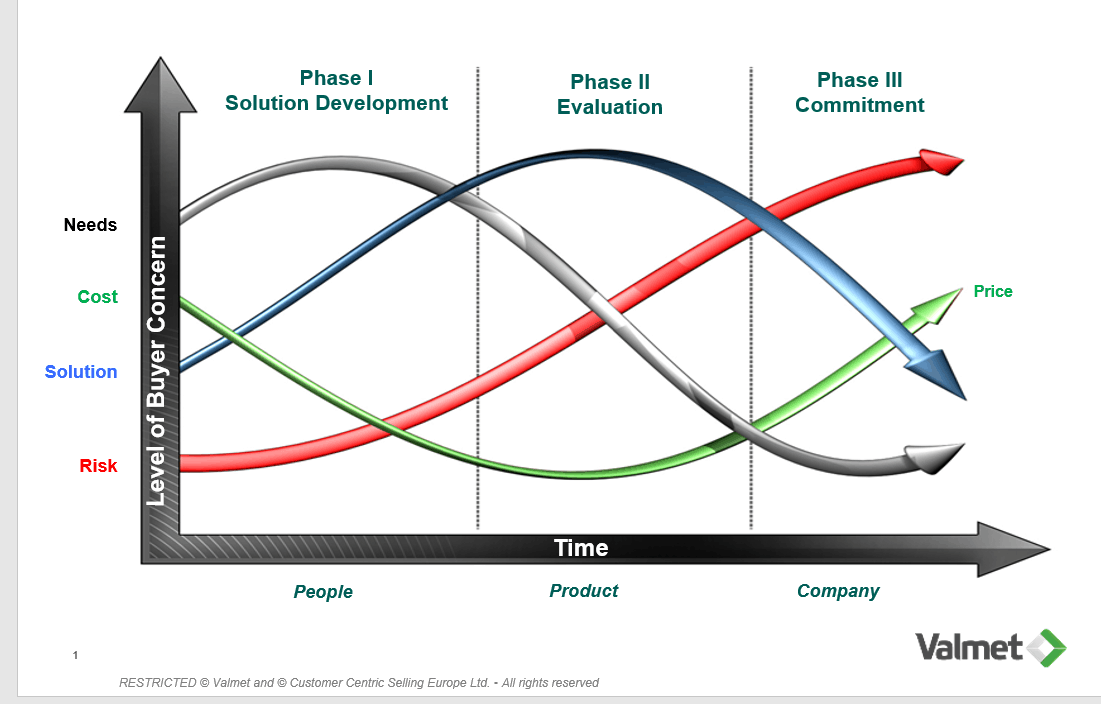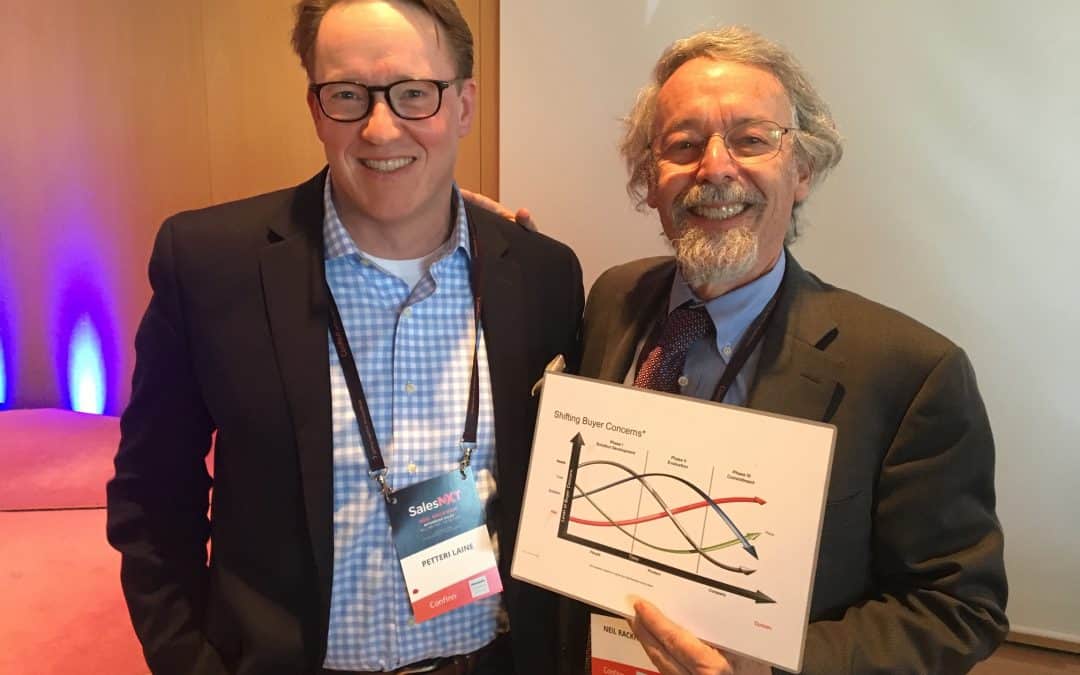I had an opportunity to meet Neil Rackham few years ago. Neil has been one of my great inspirers in sales, together with Mike Bosworth. Over a lunch meeting he asked me “what is the biggest challenge during your sales career”? What a question. He made me really think back my +25-year international sales career. Was it being nervous when making sales pitch? How about challenges with customers? Or how to lead a sales team? My reply was “the first time – with my team of course – we walked away from a large opportunity”. The case was worth several millions. I had a bad instinct about the case but was not able to tell why. It had taken us several months and numerous meetings internally and externally. The customer even hired a consultant to be in lead during the process. Even we were early; we were not able to get access to the people we needed. We shared tens of ideas. Once I managed to organize a meeting with the customer senior management, but not real outcome. I was a pure “courtesy” meeting. I did not sense urgency. We wanted to talk about value but no-one was interested. Finally, I sat down with the team and we analyzed the case against our solution sales process milestones. We then realized we were column C vendor. The challenge was not to tell the customer that we “walk away”. The biggest challenge was to tell that to my boss. Why do you think that was challenging?
The reason was forecasting. He already included my opportunity into his sales estimate and after our analysis he needed to qualify it out from there. And obviously senior management issues some uncomfortable questions.
Lets take a closer look to one value study developed by Neil Rackham, who with his team analyzed over 35,000 sales calls to understand why customers buy—way before computers were a thing. One of the study outcomes is a graph called “Shifting Buyer Concern”. The definitions is still valid in today’s environment. The graph illustrates the buying cycle over time and the typical concerns that make the customer team to evaluate and prioritize their needs, consider investment priorities, solution alternatives and related risks to invest or not to invest.
A discussion on the shifting concerns of individuals making Business to Business buying decisions. What a consultative sales person can do to help the individual make a good buying decision?
The seller can help to facilitate the buying concerns as the customer becomes aware about: 1) their needs, 2) The cost of changing their business operations or a cost of not reacting, 3) The solution options they need and 4) The risk of making a buying decision and committing to a vendor.
The process can be explained with the following graph.

The main buying phases can be also explained as follows:
Phase 1. – People – Successful execution of Phase 1 requires active dialogue between people. Developing and maintaining a professional relationship with the customer and key decision makers allows the seller to understand customer requirements and potential pain points early enough in the sales process to be successful.
Phase 2. – Product – After the customer has defined their needs their focus will turn to the product and its features. Typically they will define the requirements they wish to see in the product or solution they are willing to invest in.
Phase 3. – Company – The more complex the solution is the more risk the customer takes to make the purchase. In order to lower the risk before the final commitment, the buyer will need confidence in the supplier status, history and ability to guarantee the product or solution performance after implementation.
Need – can be defined as the reason why the customer has to act. This is the starting point for a customer in regard to a future purchase.
Solution – the solution is carefully developed once the need is defined.
Cost – the cost is the financial impact of the need, meaning that costs give the need a sense of urgency.
Risk – Risk is the feeling of making a wrong decision. The evaluation of different scenarios starts easy for the customer.
During the buying process, we also need to consider the different stakeholders involved. It is important to understand whom we should talk to at each phase. It has been shown that today there are typically 5-10 different roles involving into corporate buying process. Understanding the needs of each stakeholder will enable us to add value to the customer at a right time.
People – people buy from people. The first phase is focusing on alignment, trust and communication between people
Product – In phase two, as the buying organization is evaluation alternatives the focus is on product, solution or technology
Company – the last phase, where the feeling of potential failure is at highest the focus is on most “safe” choice
